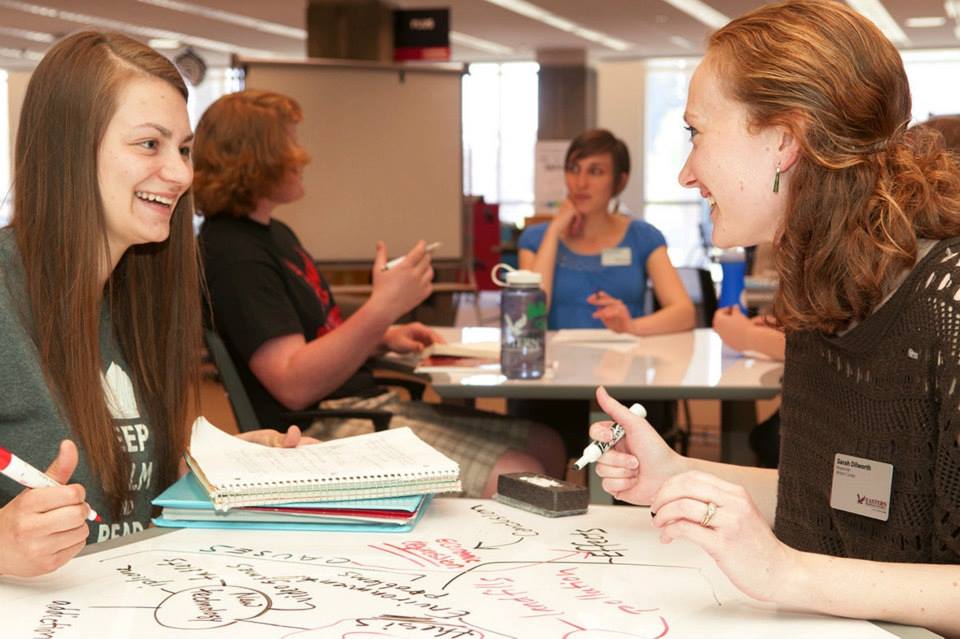Comma Overview
Commas help break up ideas and increase the readability of a sentence—they make your ideas in your sentences more clearly understood.
Below you will find a list of standard comma usage guidelines.
Adjective, Adverbial, and Prepositional Phrases (a.k.a. “Bonus Information”)
Adjective, adverbial, and prepositional phrases provide additional information, yet they are unnecessary to a sentence (meaning a sentence can function without them because you still have a subject and a verb). Since they are just bonus information, you need to isolate them from the rest of the sentence—commas are a solution.
Side Note: Punctuating the “bonus information” is sometimes referred to as parenthetical punctuation or parenthetical commas.
The creaky door, old and weathered, slammed shut. (adjective phrase that describes the noun “door”)
Slamming shut, the creaky door closed. (adverbial phrase describing the verb “closed”)
At the top of the stairs, the creaky door shut. (prepositional phrase showing location)
Appositives
My mom’s best friend, Nancy, went to the movies with us.
Unfortunately for Nancy, her name is unnecessary to the sentence (because the sentence functions fine without her name—if you deleted it, the sentence would still make sense). I need to isolate her name from the rest of the sentence with commas.
Side Note: If you’re into technical terms, there is an “appositive” at play here. An appositive is a noun or phrase (“my mom’s best friend”) that renames a noun or phrase near it (“Nancy”).
Introductory Phrases
Groggy but starving, John walked to the dining hall.
After entering the lecture hall, Jen remembered to silence her phone.
Both of these introductory phrases, while maybe interesting or providing some background detail, are not necessary (if deleted the sentences would still be complete). Each phrase must be isolated from the rest of its sentence with commas.
Joining Two Complete Thoughts
There are several ways to join two complete thoughts (meaning each thought has a subject and verb, and the thoughts could stand all on their own—otherwise known as “independent clauses”). One way to join those two complete thoughts (and avoid creating a run-on sentence) is to follow this formula:
| Complete Thought | + Comma | + FANBOYS | + Complete Thought |
| She missed the bus | , | for | she woke up late. |
| The girls flew to New York City | , | and | they attended a Broadway play. |
| The teachers didn't attend the concert | , | nor | did they attend the play. |
| He came to pick her up | , | but | she wasn’t ready yet. |
Side Note: The acronym FANBOYS stands for those short connecting words (technical term: coordinating conjunctions) that you use frequently: for, and, nor, but, or, yet, so. Notice that when nor is used, the verb comes before the pronoun after the conjunction.
You have now created a compound sentence. Click HERE for more about compound sentences.
List/Series
Michael, Lee, and Michelle went to the store.
That comma that comes before “and” in a list or series of three or more is called the “Oxford Comma.” It is a style choice whether you use it or not (but be consistent). English teachers tend to love it, while those in journalism, technical writing, and business fields tend to avoid it.
Kim ate the cold, creamy gelato. (To comma or not to comma? Use a comma because “and” between the descriptors would make sense.)
Carmen bought a neon pink scarf. (Do not use a comma because “and” between the descriptors would sound odd.)
Side Note: These types of adjectives that come before and modify the same noun are called coordinating adjectives.
Quotes
He said, “I’m hungry.”
"After the children go to sleep," she said, "I do my homework."
The commas surrounding the signal phrase (“he said”/"she said") help further separate the quote from the signal phrase, thus making it visually obvious what was actually said.
Other Uses for Commas
Commas are used to address someone directly.
If you’re the last to leave, Paul, please switch off the lights.
Commas are used to clarify meaning.
Confusing: Inside Sally plays the flute. (This sentence is confusing without the comma. Is her full name "Inside Sally"?)
Better: Inside, Sally plays the flute.
Commas are used to set off interjections such as yes, oh, well, and others. Commas also set off conjunctive adverbs such as however, therefore, similarly, hence, consequently, and others. However, commas are not generally used to set off the following words: thus, then, soon, now, or also.
Oh, that’s a good idea.
Sally left early; however, she was still late for the show.
Now Sally will begin to play.
Commas are used to write dates.
September 24, 1999 is a day I will remember. (But not, I will remember 24 September 1999.)
Commas are used to separate cities from states and to separate salutations and closings in letters. Commas also separate numbers over three digits (except dates, serial numbers, page numbers, years, and street numbers).
Sally owed $2,000 in college tuition.
Sally hopes to graduate in the year 2030.
Unnecessary Commas
It is easy to become “comma happy” and plug in commas wherever it feels like there should be a pause in a sentence. HERE is a resource to help you avoid unnecessary commas.
